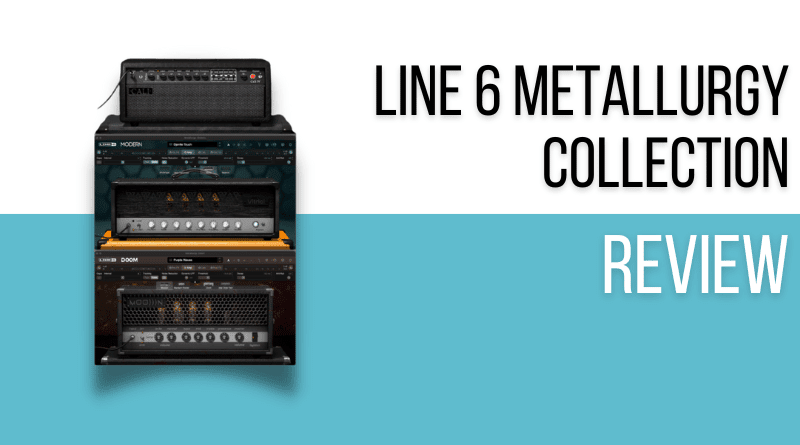Line 6 are no strangers to metal, with artists such as Mastodon’s Bill Kelliher, Nevermore/Arch Enemy’s Jeff Lomis, Exodus/Slayer’s Gary Holt and Testament’s Alex Skolnick among their endorsing artists.
The company also has a long history with plugins, all the way up to Helix Native, which gives users 60+ of their HX modeled amps in one plugin – at a price.
However, with the Metallurgy Collection, Line 6 set their sights squarely at metal players, but in a more affordable package. Each of the three plugins in the bundle aims to provide a variety of mix ready signal chains based on four HX modeled high gain amps that will be all too familiar to metal players of that genre (Thrash, Modern and Doom)
In addition to the amps, the plugin comes with a variety of cabinets, and a selection of pedals that are specifically chosen to pair with that style, such as gigantic fuzz peals in the Doom plugin, tube overloading overdrives for the Thrash plugin, and high end delays and compressors for modern. Users can also pick two mics from a locker of 8 specially selected mics if they really want to get granular with their tone.
Our good friends at Sweetwater were kind enough to provide us with a review copy of the Metallurgy Collection, though as ever, they asked for no editorial input and our opinions in this review are entirely our own.
So does the Metallurgy Collection have the tones to live up to the hype? Let’s find out.
Read more about our review process.
Contents
Who is this for?
The Metallurgy Collection is aimed at high gain metal players looking for plugins that will give them a great genre-specific amp tone out of the box, but with the option to swap out cabs, pedals and mics. While their lager Helix Native suite does have a larger array of amps, the Metallurgy collection is significantly cheaper, and comes with a variety of tones that are dialed in for metal players right out of the box.
Appearance / Features / Controls
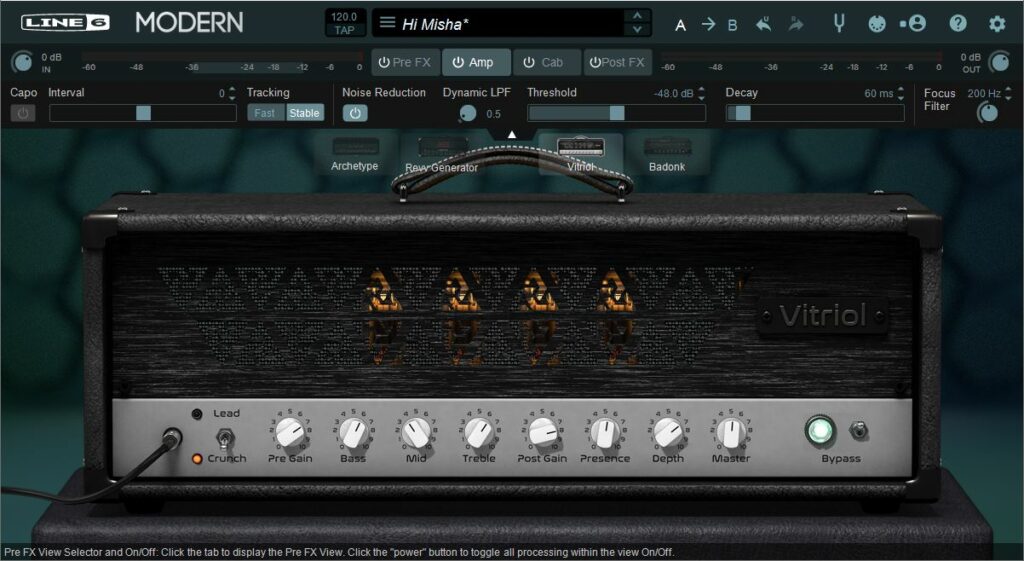
The Metallurgy plugins have a very streamlined and intuitive layout, which makes sense in the context of providing players with grab and go tones that don’t get in the way of writing and recording.
At the top of the plugin, you can choose from a wide range of presets, separated out into Lead, Rhythm, Clean, Special and Mix Ready folders. This same row provides a metronome and tuner, as well as A/B buttons to allow users to quickly test tones against each other.
Below this, in between DB meters for signal in and out, are the Pre-Fx, Amp, Cab and Post FX selectors, each of which swap the main area of the plugin to allow you to dial in that component of the signal chain.
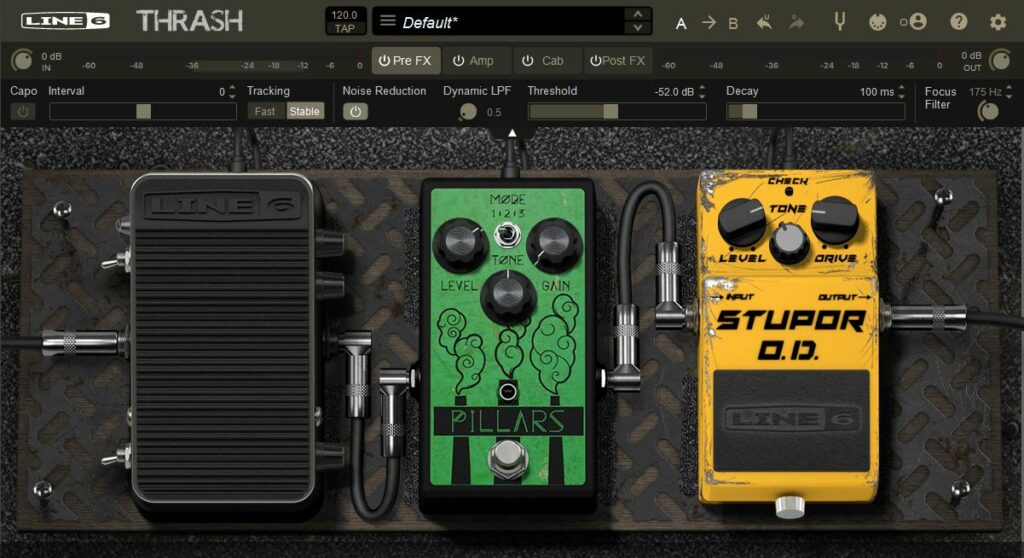
Each of the three plugins comes with a standard set of pre and post FX, taken from Helix models of popular pedals. For pre-fx, we get a compressor and two drives on the Modern, wah and two overdrives on the Thrash, and two fuzz pedals, a distortion pedal and a phaser on the Doom. For post FX we get echo and reverb on the Modern, and different double trackers and delays on both the Thrash and the Doom.
The meat of the plugins however are the amps. Each plugin has four amps – all models of popular high gain amps on the Thrash, or three models and one Line 6 original on the Modern and Doom.
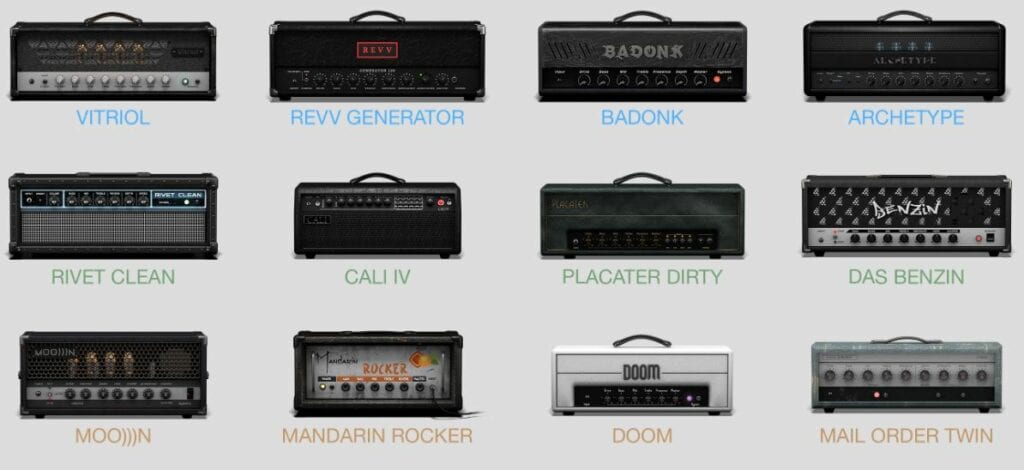
For the Modern, you get the “Vitriol” (a Peavy Invective), the “Revv Generator” (what it sound like), the “Archetype” (a PRS Archon 50) and the “Badonk”, which is a Line 6 model with massive amount of gain and a hefty bottom end.
With the Doom, you get the “MOO)))N” (a 70s era Sunn Model T), the “Mandarin Rocker” (An Orange Rockerverb 100 MKIII), the “Mail Order Twin” (a 60s era 35-watt Silvertone 1484 Twin Twelve) and the Doom, a Line 6 model based on a Marshall JCM800 preamp going into a Hiwatt Power Amp.
On the Thrash plugin, you can choose from the “Rivet Clean” (a Roland Jazz Chorus 120), the “Cali IV” (a Mesa Boogie Mark IV), the “Placater Dirty” (a Friedman BE-100), and the “Das Benzin” (a Diezel VH4).
Each of the amps controls are directly usable, though there is no option to mess with the rear controls of the amps or the tube biasing.
Another interesting feature of the Metallurgy collection is the “Capo”, which is essentially a pitch shifter, allowing you to pitch your guitar up or down 5 tones. In practice this actually sounds quite realistic, though we did find you needed to have decent volume coming out of your speakers to avoid the acoustic sound of your guitar messing with your head.
Finally the pluginscan be used as VST3, AU or AAX, or as standalone applications if you just want to jam out.
Performance / Sound
So the decider – how do the plugins actually sound? It would be all to easy for Line 6 to create middle of the road plugins given how many people are already invested in their Helix lines – but they’ve actually gone a step further, and knocked it out of the park.
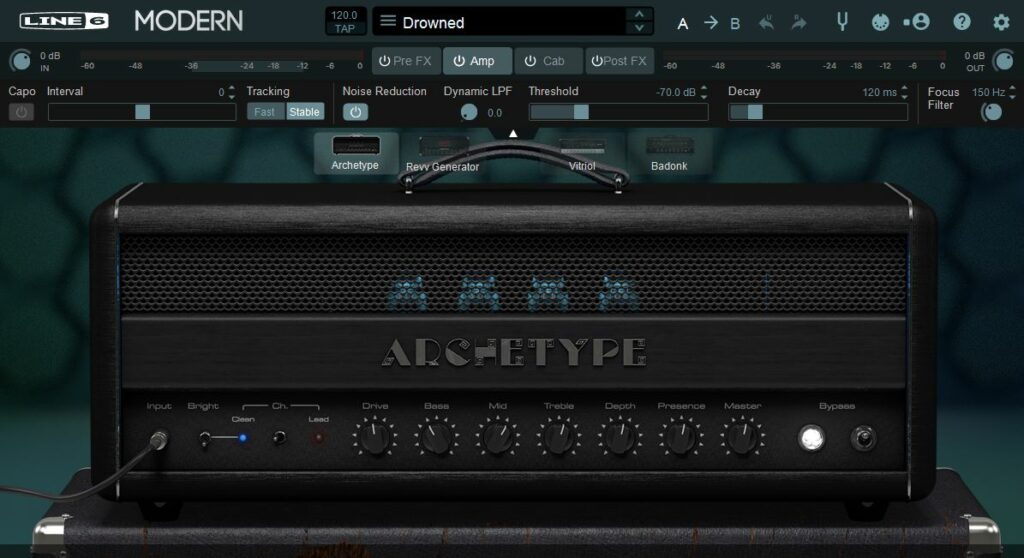
Starting with the Modern plugin, the “Vitriol” amp is the standout of the bunch, nailing the Peavey Invective’s percussive and tight attack, rich with harmonic overtones and comfortable with low tuned guitars (even if you’re just using the Capo feature). We didn’t have an Invective in the office to A/B, but the more djenty among us couldn’t put this down.
Also from this pack, the Archetype gave us the lush clean and broken up tones of the PRS Archon 50, and paired with the echo chorus and hall reverb in the post-fx, gave us some epic clean soundscapes to play with. Within the “special” section of the presets, we really enjoyed Drowned and Faux Chorus, both based on the Archetype.
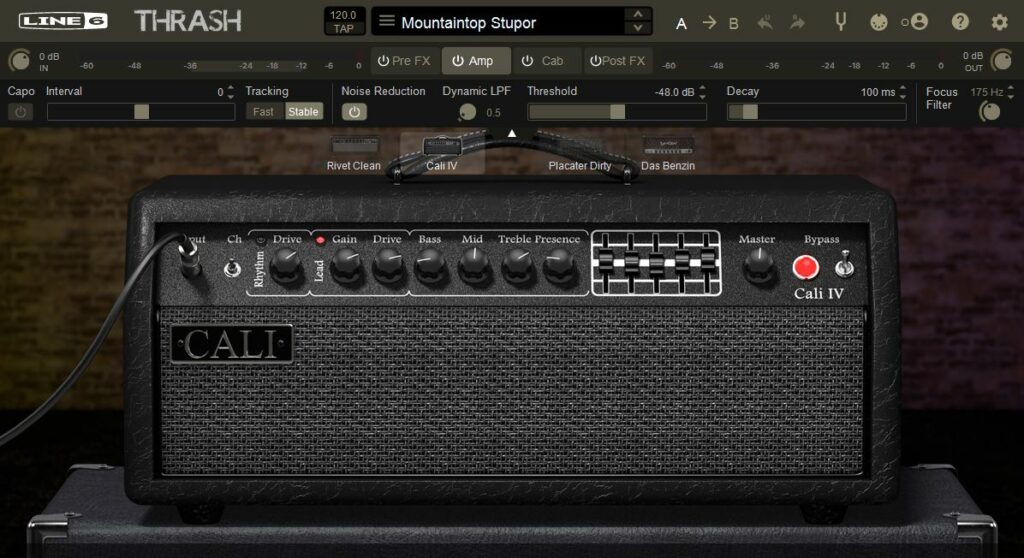
Next the Thrash – this one was a ton of fun to play around with, at one stage the team was sitting around with the Cali IV (a Mesa Mark IV) having a game of “play a Metallica riff without playing a Metallica riff”. The tones out of the Cali were exactly as tight and aggressive as you’d expect, and the doubler and delay pedals added a ton of variety to the sound.
Similarly the Placater Dirty (a Friedman BE-100) had killer modified Plexi tones on tap, but with a ton of tight gain, and that’s before we even threw an overdrive on there. So much fun.
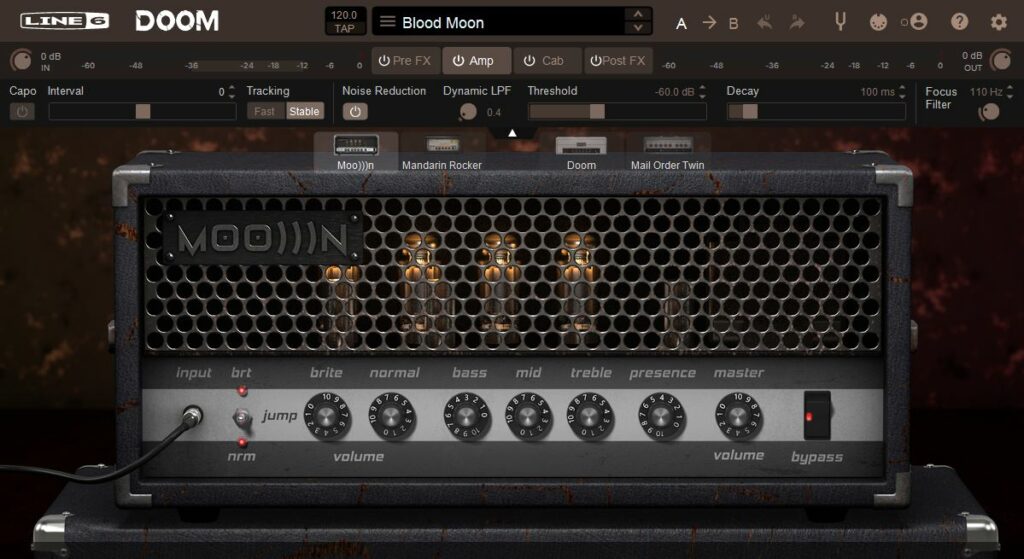
Finally the Doom plugin – we had fun with all of the models, especially the reverb and tremolo soaked Mail Order Twin (a 60s era Silvertone 1483 Twin Twelve) for desert inspired interlude type playing (this could also go over awesome for some Russian Circles type cleans), but the MOO)))N completely stole the show.
If you’ve experienced a 70s-era Sunn Model T in the flesh, you’ll know the “my ears are about to explode” tone they can achieve, and Line 6 nailed it with this plugin. At one stage we were worried our speakers would explode, but really it was just the accuracy of the speaker ripping tone within the plugin. Absolutely nailed it.
Final thoughts on the Line 6 Metallurgy Collection
The metal plugin market is not only quite crowded, it’s also quite competitive these days, between Neural DSP, STL Tones, Toontrack, IK Multimedia, Bogren Digital and more.
Even so, Line 6 have created three noteworthy plugins in the Metallurgy Collection, not least because they’ve all but nailed some extremely popular amps with metal players. On top of that, the plug and play nature of the plugins (compared to some others that need a lot of tweaking before you’re ready to hit record) makes them a no-brainer for anyone looking to get a great tone up and running while they’re still in creative mode.
If you do decide to check out the Metallurgy Collection, be sure to hit up our favorite online retailer Sweetwater, and maybe even bug your sales rep to do you a deal!

